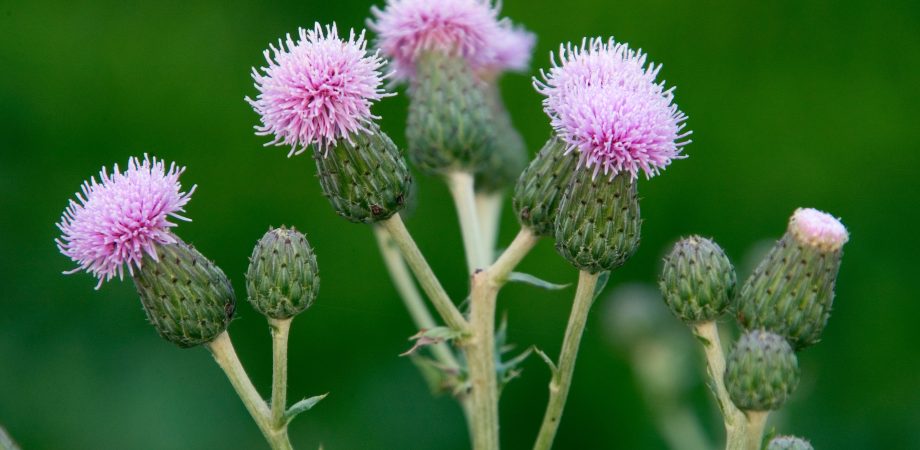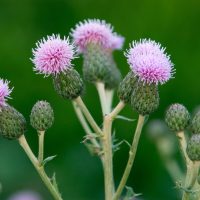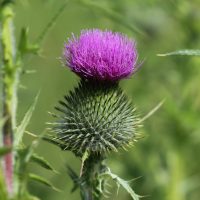Hard to Kill: Thistle

Both native and invasive thistles are present in the ATS geography. Native thistles include field thistle and swamp thistle, which can be confused with invasive thistle species. Those non-native species include Canada thistle and bull thistle.
Canada thistle can grow up to 6.5 feet tall. Both Canada thistle and bull thistle have pinkish-purple disk flowers, though bull thistle has longer spines on its bracts. Unlike swamp thistle, Canada thistle has rhizomes that can grow extensively. Bull thistle and field thistle spread through seeds, not rhizomes.
Canada thistle is particularly hard to kill because of its extensive root system. Most invasive thistles are native to Europe and can outcompete plants here. Thistles grow best in bare soil, which means that maintaining a thick lawn helps prevent an infestation. Regular mowing is another cultural practice to control thistle. Prevention and early control are ideal because mature thistle typically requires an herbicide to manage.
Herbicides containing triclopyr and 2,4-D are the most effective at treating thistle. Consider an adjuvant to maximize your application. Read product labels and consult your ATS representative for help selecting an herbicide and, potentially, adjuvant for your needs. Note that vegetables and flowers are susceptible to triclopyr and 2,4-D, so you shouldn’t use these active ingredients in garden areas.
Fall is the best time to treat thistle. Broadleaf weed control is most successful in the fall because the weeds are preparing for winter by storing nutrients in their roots. Herbicides can go along for the ride to target the weed at the root.
It’s best to make an herbicide application on a sunny day without rain in the 24-hour forecast, as overcast conditions and rainfall reduce efficacy. Try to give the herbicide time to dry on the leaf surface.









